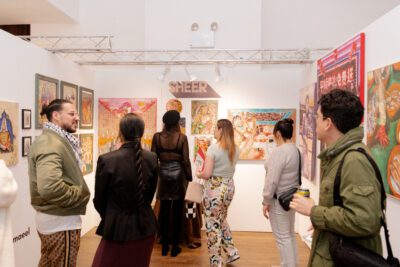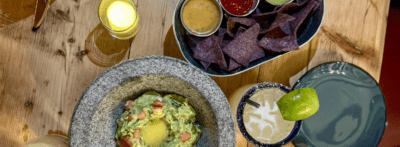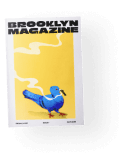Sarah Neufeld (Of Arcade Fire) Is Introducing A Different Kind Of Yoga To Williamsburg
I like to set up my mat next to the elephant by the far wall. He’s a wispy, purple-gray figure painted in the corner of Modo Yoga’s otherwise pristine Williamsburg studio. The end of his trunk turns into a set of praying hands, sweeping up and outward, and his third eye is unblinking, but peaceful. I’m a new yogi, about five months into my practice, but his serenity speaks to me. In some ways, this playful but deeply spiritual symbol captures the spirit of Modo’s practice; it is a yoga tradition rooted as much in community and peacefulness as it is physical activity.
This balance is part of what drew Arcade Fire member Sarah Neufeld to the practice, and what has sparked her to invest in the community. Neufeld is a co-founder of the studio and often teaches classes there herself. As a young musician in Montreal, she got into yoga to find peacefulness, and later, to cope with the pressures of life as a touring musician. Outside of her role at the studio, Neufeld is an accomplished violinist and longtime member of Arcade Fire, Bell Orchestre. She has released joint projects with fellow Arcade Fire member saxophonist/multireedist Colin Stetson, and an a solo album in 2013. Her second solo record The Ridge will be out next Friday, 2/26 via Paper Bag Records. You can listen to “Where The Light Comes In” below via Stereogum. Neufeld describes it as a song written in a moment of peace, which makes it a fitting companion for a story about her yoga studio.
Yoga has become as much a part of Neufeld’s life as music is; the Williamsburg studio, which opened in January, is the second New York-based location for Modo. Neufeld has been an integral force in establishing both practices in the city; the Modo practice itself originated in Canada, where it’s known as Moksha.
“I got into yoga when I was really young and trying to find a form of exercise that I could connect with and get some peace,” Neufeld told me after teaching a recent hot Yin night class at the new studio. “I didn’t quite land in necessarily the right space or the right practice for myself for a while. I tried Ashtanga, then later Bikram which was cathartic because of the heat. But then stuff about that practice hurt my body, I’m a violinist so I have neck problems and a lot of that stuff wasn’t helping my neck. I found Moksha around 2005 in between tours. People were getting excited and they were so welcoming that it really encouraged me to develop my own practice.”
Several years later, in 2009, a friend decided to take the teacher training course, and Neufeld followed suit.
“We’re both musicians and both really close with the community already,” she said. “We felt really supported in our touring lives and in our bodies through the practice. It was scary and fun to do something new, and we’d both been doing music our whole lives. It lent well to traveling too; you just need however tall you are, by however wide your hips are basically. I’ve done it in some pretty tight spaces on tour.”
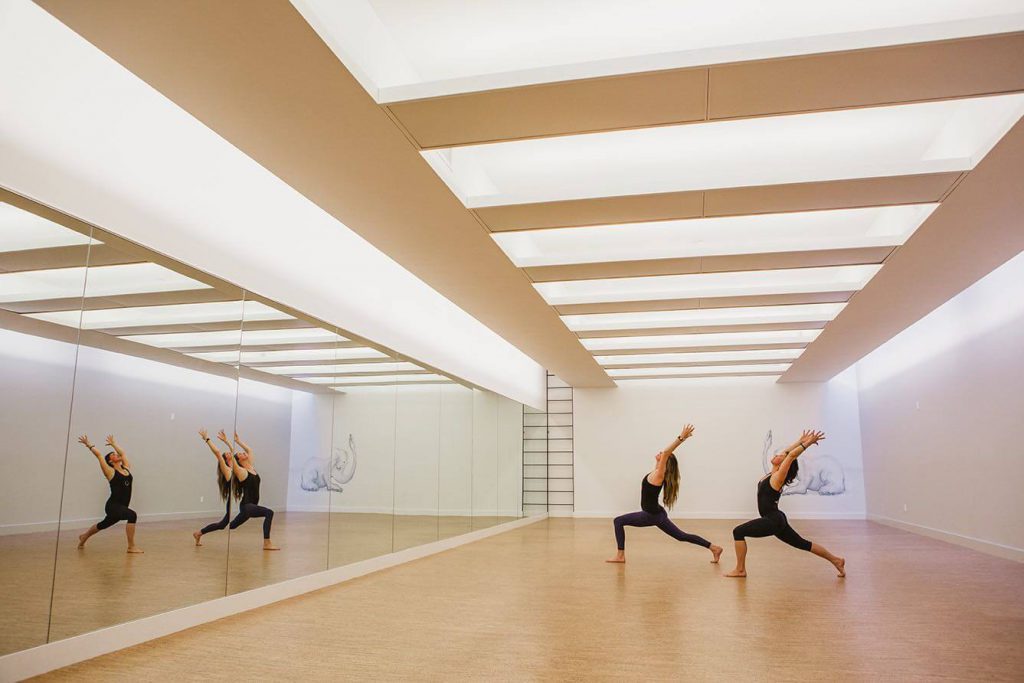
Photo by Jennifer Ballard
The practice of Modo differs slightly from Bikram or other vinyasa flows, because it’s designed to be a sustainable practice for a lifetime.
“Modo is one of those practices that’s designed specifically for you to be able to do your whole life and prevent injury,” Neufeld explained. “You work in a way that strengthens you so you become less prone to injury in other areas of your life, too. That’s what I’ve noticed about it. It’s like, when I’m regularly practicing that way, I get less sore and hurt all over, when I’m running or doing other things.”
This partially due to the slower pace of the practice, and an emphasis on protecting the lower back.
“You’re holding the poses longer, it’s slower, and it’s not a flow practice,” she said. “Although, it does go into some aspects of the vinyasa breakdown, later on though, so you’re really open and you’ve worked a lot of core; you’ve already done a lot of twisting, hip opening and gentle back bends. It’s always emphasizing protecting the lower back because that is such a release valve for people. So many people have issues there, so it’s a lot of lower body strengthening as well to get that support to lift up.”
There are Modo practices across the country and all of them are independently owned. Neufeld and her business partner opened their West Village location in 2012.
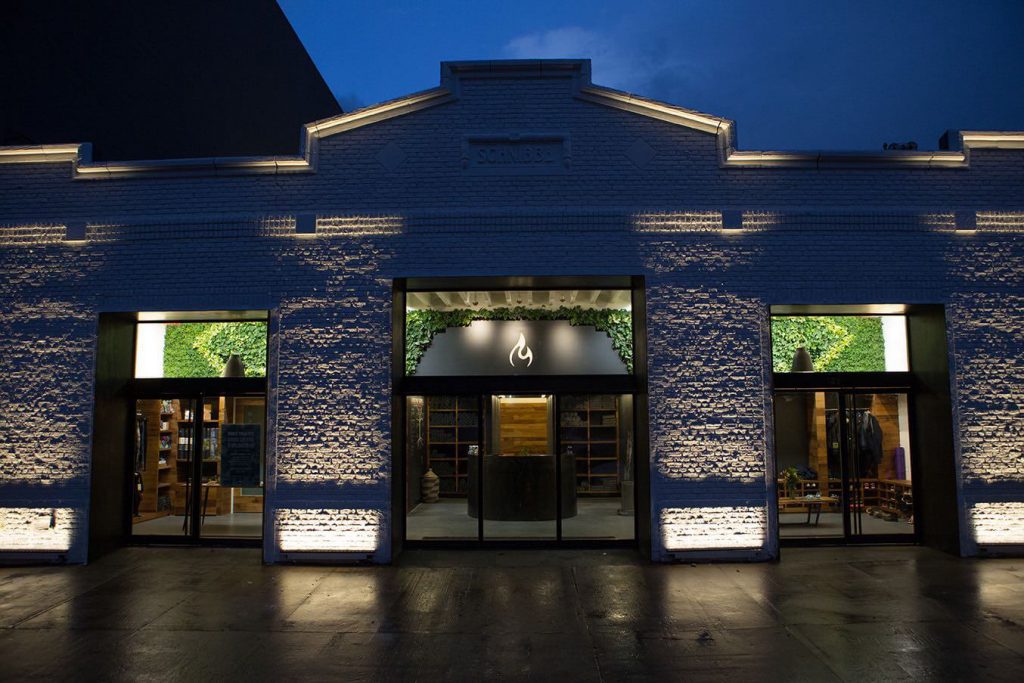

Photo by Jennifer Ballard
“It’s always the question of an individual who gets really into the practice in some way or another and wants to create it,” Neufeld said. “Everybody that owns a MokSha studio has to be a teacher and do the training for a couple of years and be trusted, respected and accepted into that world. We encourage sustainability in everything we do we try to really push it to the next level. All the building materials are green, in all of the studios.”
Modo is built around seven core pillars: “Be healthy, be accessible, live green, community support, reach out, live to learn, and be peace.”
If there’s one pillar that’s most obviously on display at the new Williamsburg studio, it’s that green element. Walking into the space feels differently, like you’re still outdoors; the studio’s vibrant, green living wall is visible even from the street, one of the most eye-catching components of the space’s design.
“We put a lot of thought into the whole space,” Neufeld said. “DXA, a firm in Manhattan that I have a old-friend connection with, is the architect. They’re really excited by green building too and they’re are very design-driven. Combining our aesthetic with theirs worked really well to create a space that has a real flow. We really got to create our own universe here and it envelops you. On the whole it is a pretty special place.”
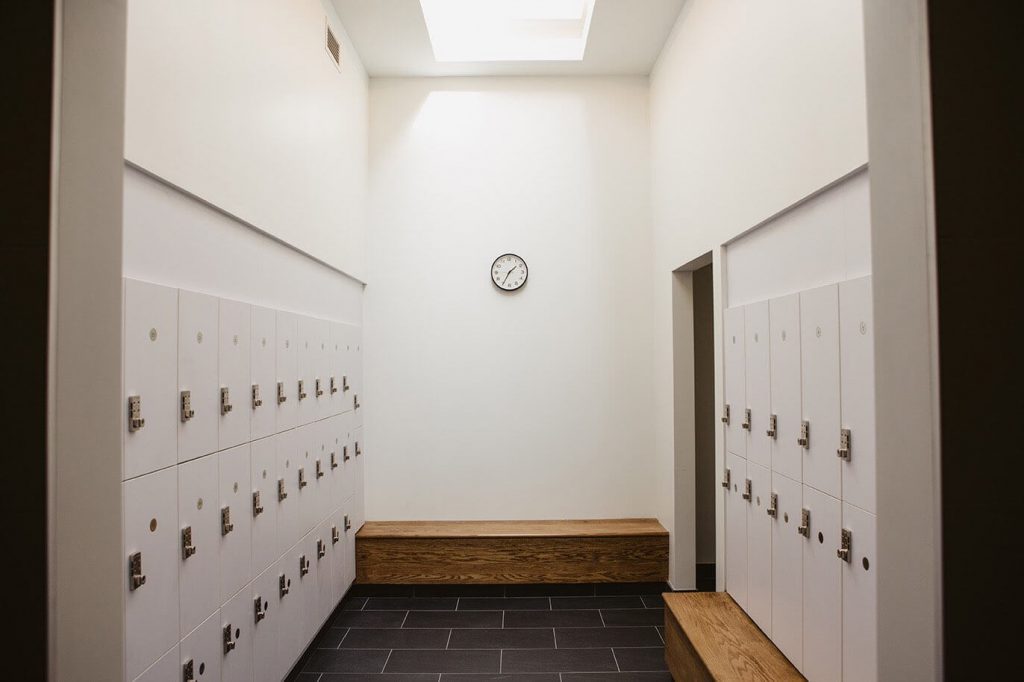

Photo by Jennifer Ballard
The spacious foyer is welcoming and feels designed for sitting, sipping on tea, and visiting with friends. From here, the space flows into locker rooms and the two heated studios with vaulted ceilings. Modo rents out water bottles to cut down on plastic waste, and provides green biodegradable bags to stash sweaty workout clothes in post-shower. Light streams in from windows and skylights, even in the studios themselves. The practices offered include the Modo practice mentioned above, the restorative deep-tissue Yin practice, a more difficult freestyle flow class, and variations that include Yin and Modo plus some vinyasa flow, or additions like music.
Over the course of my initial month practicing Modo, I’ve felt the impact of it on my body, and spending time in a green space has made me more mindful of ways I can practice conserving in my home and work life. It’s the sense of community that supersedes all these other elements though, as teachers and students come together in non-judgmental, peaceful pursuit of a challenging physical practice. And while we sweat, lean and twist, the elephant looks wisely on, third eye unblinking. Maybe, with practice, I’ll learn to open mine, too.
You might also like 















